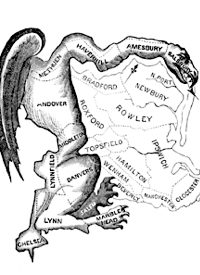
The Founding Fathers provided in the Constitution for a count each 10 years of the number of people in our country. Citizens of the United States are free to move from state to state, choosing which part of our nation seems best to them. The results of that decennial census will help the Republican Party and hurt the Democrat Party.
States which historically have supported more conservative candidates, such as Texas, Florida, Arizona, Utah, South Carolina, and Georgia, have gained population more quickly than the rest of America. Conversely, states which have historically supported more liberal candidates, such as New York, Massachusetts, Illinois, and Michigan, will lose seats because their populations have grown at a slower rate.
The shift in congressional seats which follows each census has several political implications. Because each state’s electoral votes are calculated based upon the number of Senators (always two) and the number of House members each state has in Congress, states that gain House seats in reapportionment gain an equal number of electoral votes. The gains of traditionally conservative states such as Texas, Arizona, Utah, Florida, South Carolina, and Georgia, effectively transfer to the conservative candidate in a presidential election the equivalent of a medium-sized state without a single American casting his ballot differently.
The shift of congressional seats — from states either losing or gaining those seats – means that the state legislatures and governors of those states have a chance to create a new configuration of House districts which favors one political party over another. This gerrymandering has been going on since the beginning of the Republic. Since FDR, Democrats have held hegemony in state legislatures and so have drawn congressional districts to elect the greatest number from their own party.
In the 2010 midterm election, however, Republicans made stunning gains in state legislatures and also in governorships which had a role to play in the process as well. Thus, in Texas and in Florida, Republicans will be able to redraw the congressional districts to accommodate the new districts awarded by population changes. Computer software tools can make this process ever more efficient in predicting the partisan consequence of this redistricting. In states which lost seats, such as Michigan and Pennsylvania, Republicans in control of state government can help insure that the House seats lost are those occupied by incumbent Democrats. Even in states with no gains or losses of House seats, the internal shifts of population require that districts be redrawn. So redistricting is a process at work in every state which has multiple congressional districts.
The practical political effect of reapportionment favoring traditionally conservative Republican states and Republicans controlling state government in many more key states than Democrats will mean that in 2012, even if every single American cast his ballot exactly the same way for Congress in his congressional districts, Republicans would gain 15 to 20 seats in the House of Representatives. Unless 2012 is a strong Democrat year, the reapportionment/redistricting advantage for Republicans means that there is almost no chance of Democrats regaining the House of Representatives in the next election. It also means that if 2012 is even a mildly Republican year, that Republicans will probably increase their numbers in the House of Representatives to a modern-era high of about 270 members.
There is another, subtler, long-term effect to reapportionment and redistricting. In the vast majority of states, it is not only the congressional districts which are redrawn each 10 years, but also state legislative districts for both houses of the state legislature. That means Republicans who control state legislatures will be able to redraw existing state legislative districts so that in the next election — indeed, over the next decade — more Republicans will be added to the existing state legislative majorities. Ten years from now, at the 2020 census, it is likely that Republicans may well have even more state legislative seats than they do today.
Does this all sound rather like cutthroat business? Of course it does, although it is hardly “worse” — because for once Republicans are doing the gerrymandering rather than Democrats. There are a number of “good government” solutions to redistricting, and doubtless many will be trotted out over the next couple of years. The root problem, however, is that Americans have made government far too important in their lives. So fierce fighting over a state senate seat in New York, which allows Republicans to stop Democrat gerrymandering, is worth vast amounts of money and power in our over-governed Republic. Democrats, more than Republicans — though both are guilty — have supported Big Government almost reflexively.? Perhaps, now, they will begin to see the merit of small government.
Illustration: The original "gerrymandered" political district, a term coined in 1812 and named after then-Massachusetts Governor Elbridge Gerry.



